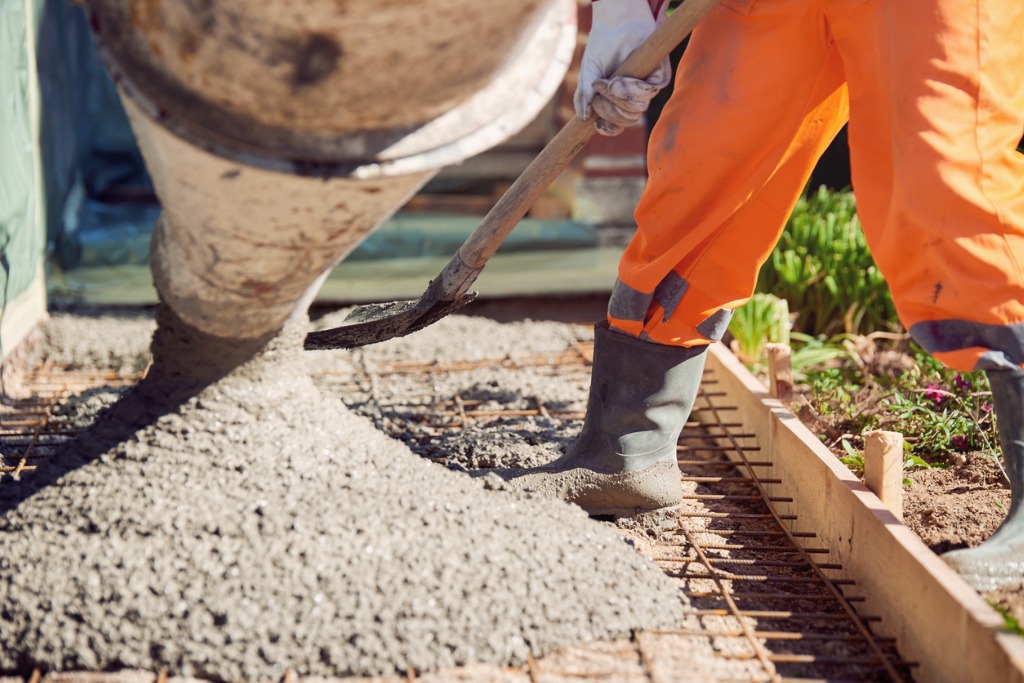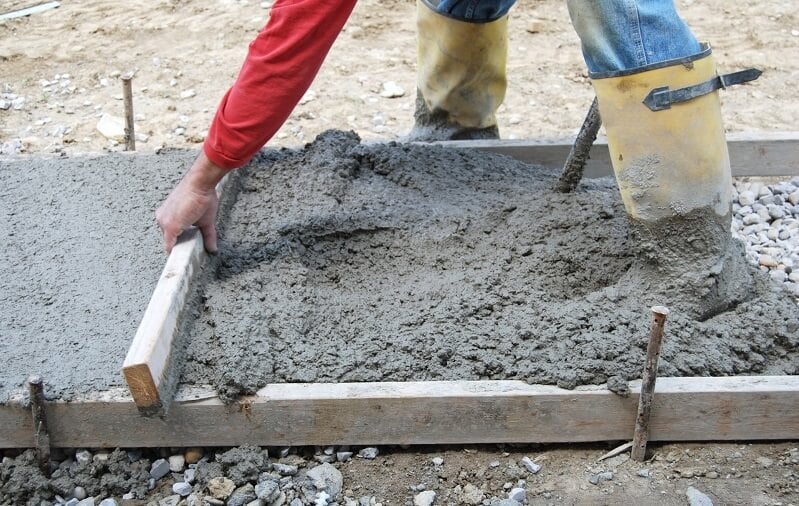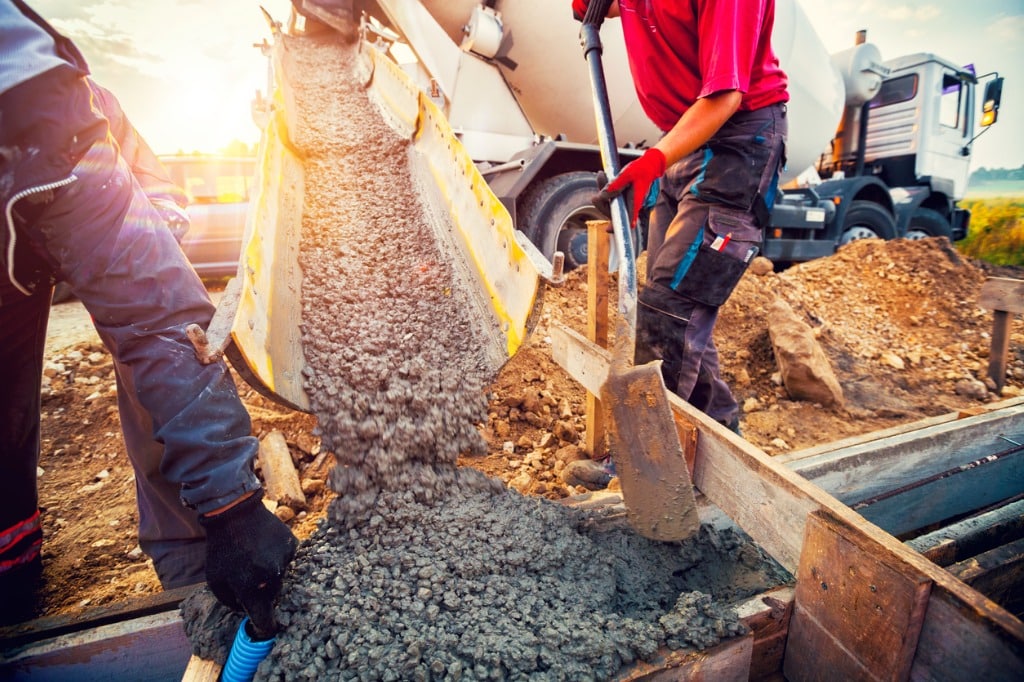Everything about Concrete: Essential Solutions for Residential and Commercial Construction
Concrete is a crucial element in the construction market, offering both household and commercial needs. Its one-of-a-kind composition supplies strength and longevity, making it appropriate for numerous applications. From foundational work to ornamental finishes, concrete plays a significant role in improving architectural stability and aesthetic charm. Yet, there are several subtleties to contemplate when collaborating with this functional product. The exploration of its necessary solutions discloses a lot even more than fulfills the eye.
Comprehending the Basics of Concrete
Concrete, a fundamental material in building and construction, is made up of a mixture of cement, water, aggregates, and additives. This flexible compound is understood for its versatility, toughness, and toughness, making it a preferred selection for different applications. The concrete functions as a binding agent, while accumulations offer mass and strength. Water is important for the hydration process, which transforms the combination into a strong mass. Additives can change the buildings of concrete, such as setting time and workability, permitting for tailored remedies to particular task requirements.
Concrete can be cast right into various sizes and shapes, making it appropriate for everything from walkways to skyscrapers. Its capability to endure compressive pressures makes it suitable for structural parts. Additionally, its thermal mass adds to power effectiveness in buildings. Comprehending these fundamental components of concrete is crucial for any individual included in the building market, as it prepares for effective job execution.

Crucial Concrete Providers for Structures
Structures play a considerable role in the stability and longevity of any type of structure, and concrete solutions are fundamental in their building. A dependable concrete foundation warranties that the weight of the structure is evenly distributed, lessening the risk of shifting or clearing up. Important services consist of website preparation, in which the ground is graded and compressed to develop a solid base. Concrete pouring follows, using high-grade materials to create a resilient piece or grounds designed to stand up to various environmental problems.
Support, generally with steel rebar, includes stamina to the foundation, preventing cracks and structural failings. Correct curing techniques are likewise crucial, permitting the concrete to achieve its suitable toughness over time. Furthermore, waterproofing steps can be implemented to protect against moisture intrusion, which is vital for keeping the stability of the structure. These vital concrete solutions jointly add to a robust foundation, creating the backbone of any kind of successful building job.
Driveway Setup and Maintenance Options
In the domain name of driveway installment, numerous products such as concrete, asphalt, and gravel provide unique advantages and looks. Understanding these alternatives is vital for homeowners looking for sturdiness and allure. Furthermore, implementing efficient upkeep methods can greatly prolong the lifespan and performance of a driveway.

Kinds Of Driveway Materials
Driveways work as essential pathways for lorries, and the selection of products substantially affects their upkeep, sturdiness, and appearance requirements. Common driveway materials consist of concrete, asphalt, crushed rock, pavers, and bricks. Concrete driveways are known for their toughness and long life, while asphalt provides versatility and a smooth coating. Crushed rock driveways are economical and very easy to set up, offering good drain however requiring even more maintenance. Pavers and bricks offer visual charm and flexibility in layout, however they can be more labor-intensive to set up. Each product has unique features that accommodate various preferences and spending plans, making it crucial for home owners and home builders to thoroughly consider their alternatives when selecting driveway products for residential or industrial tasks.
Maintenance Tips for Longevity
Selecting the ideal materials for driveways is just the start; effective upkeep is essential for ensuring their durability and efficiency. Normal cleaning is critical, as particles, dust, and oil can deteriorate the surface area. Home owners should consider securing their concrete driveways every couple of years to shield against dampness infiltration and freeze-thaw cycles. Cracks need to be resolved promptly; small fissures can quickly broaden if left without treatment. In addition, it is suggested to stay clear of hefty lots and sharp objects that could harm the surface. Installing proper water drainage systems can protect against water buildup, which is essential for maintaining structural honesty. Ultimately, regular evaluations help identify potential issues early, enabling prompt repairs and expanding the driveway's life expectancy significantly.
Decorative Concrete Surfaces for Aesthetic Appeal
While many associate concrete primarily with capability, attractive concrete coatings have actually become a preferred selection for enhancing visual charm in numerous building projects. Phoenix Concrete Contractor. These coatings transform ordinary concrete right into visually striking surface areas, suitable for both business and property applications. Techniques such as marking, staining, and polishing you can try this out enable a range of patterns, shades, and structures, enabling developers to mimic all-natural materials like rock or wood
Amongst the various choices, stamped concrete supplies a cost-efficient method to achieve elaborate layouts, while acid staining adds depth and vibrancy to surface areas. Polished concrete, on the other hand, offers a smooth, modern-day look, perfect for contemporary spaces. Furthermore, exposed aggregate surfaces can display colorful stones, including an unique touch to exterior areas. In general, attractive concrete finishes not only elevate the aesthetic allure of spaces yet also add to the longevity and longevity of concrete surface areas in a fashionable manner.
Concrete Repair Service and Restoration Methods
Resolving concerns of wear, damage, or damage in concrete surfaces is crucial for preserving architectural stability and aesthetic allure. Numerous concrete repair service and repair methods are employed to restore surface areas to their original condition. Break securing is a typical method, entailing making use of specific materials to load and stop further damages. For a lot more substantial repair work, epoxy injection can be made use of to bond and reinforce broken areas. Surface area spalling typically requires resurfacing, where a brand-new layer of concrete is put on enhance durability and look. Furthermore, concrete overlays offer an effective solution for recovering used surfaces while providing design flexibility. In cases of extreme damage, total replacement might be essential. Appropriate assessment and prompt intervention are very important in figuring out the most reliable repair work strategy, thereby lengthening the lifespan of concrete structures and making certain security for domestic and commercial applications.
Ecological Considerations in Concrete Construction
Environmental factors to consider play a Full Article crucial function in modern concrete building and construction practices. Stressing lasting material choices, effective waste monitoring methods, and strategies for carbon footprint decrease can substantially boost the environmental impact of building and construction jobs. As the sector develops, resolving these elements comes to be increasingly crucial for advertising sustainability.
Lasting Product Options
As the building market progressively focuses on sustainability, the expedition of lasting material choices in concrete building has actually gotten substantial focus. Typical concrete blends generally depend on Rose city concrete, which has a considerable carbon impact. Alternatives such as fly ash, slag cement, and recycled concrete accumulations are being made use of to lower environmental impact. In addition, bio-based admixtures and cutting-edge strategies like carbon capture and utilization are emerging, additionally improving the sustainability of concrete. These materials not only minimize waste however additionally improve the performance and resilience of concrete structures. By incorporating sustainable options, the construction industry can add to a circular economic climate, lower greenhouse gas emissions, and promote liable source administration while satisfying the growing need for environmentally friendly building techniques.
Waste Monitoring Practices
Properly taking care of waste is vital in concrete building and construction, where substantial materials can be lost throughout manufacturing and demolition processes. Executing robust waste monitoring practices not just conserves sources however additionally lessens environmental influence. Reuse and recycling of concrete debris are essential approaches, allowing the recuperation of aggregates for brand-new mixes. In addition, appropriate sorting of products at job websites can decrease contamination and rise recycling see here now rates. Making use of lean construction approaches additionally enhances performance by enhancing material use and decreasing excess waste. Education and training of employees in reliable waste monitoring methods assure adherence to standards, cultivating a culture of sustainability. Generally, these practices add to a much more eco responsible technique in the concrete industry, sustaining both residential and business jobs.

Carbon Footprint Decrease
Waste administration practices set the stage for addressing the carbon footprint related to concrete building and construction. The production of concrete is recognized to generate significant greenhouse gas exhausts, mainly from concrete manufacturing. To alleviate this impact, various approaches have emerged. Using different materials, such as recycled aggregates and commercial byproducts like fly ash, helps minimize dependence on traditional cement. Innovations in concrete solutions, including the growth of low-carbon and carbon-absorbing concrete, add to sustainability objectives. Implementing energy-efficient methods in blending and treating procedures likewise plays a crucial function. In addition, optimizing transportation logistics decreases discharges related to supplying concrete. By embracing these measures, the building and construction industry can significantly lower its carbon footprint while advertising eco-friendly practices.
Regularly Asked Questions
For How Long Does Concrete Take to Treat Totally?
Concrete usually takes 28 days to heal entirely, reaching its perfect stamina (Concrete Contractor Near Me). Preliminary setting happens within hours, and it can support light loads after a couple of days, depending on ecological problems and mix composition.

Can I Pour Concrete in Cold Weather Condition?
Yes, concrete can be gathered winter, however preventative measures are necessary. Appropriate insulation, utilizing warm water, and additives can help guarantee sufficient curing and avoid freezing, which may endanger the honesty of the concrete.
What Is the Ordinary Life-span of Concrete Frameworks?
The typical life expectancy of concrete structures generally ranges from 30 to 100 years, depending on variables such as ecological problems, maintenance practices, and the quality of materials made use of in building and construction.
Is Concrete Recyclable After Demolition?
Yes, concrete is recyclable after demolition - Concrete Contractor Near Me. It can be smashed and repurposed for numerous applications, such as brand-new building, road base, and landscaping. This procedure aids minimize waste and saves natural deposits
Exactly how Do I Select the Right Specialist for Concrete Job?
To select the best professional for concrete work, one need to confirm credentials, analyze previous projects, reviewed evaluations, and obtain numerous quotes. Clear communication concerning job expectations and timelines likewise plays an important role in the choice process.
Concrete, a basic material in construction, is composed of a mixture of concrete, water, accumulations, and additives. While several associate concrete mainly with capability, ornamental concrete coatings have arised as a popular option for enhancing aesthetic allure in various building and construction projects. As the building industry progressively focuses on sustainability, the exploration of sustainable product options in concrete building and construction has gotten significant focus. Efficiently taking care of waste is essential in concrete building and construction, where significant materials can be shed throughout production and demolition processes. Innovations in concrete formulations, including the advancement of low-carbon and carbon-absorbing concrete, contribute to sustainability objectives.